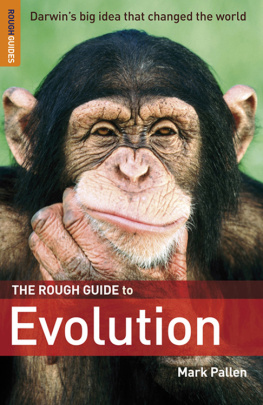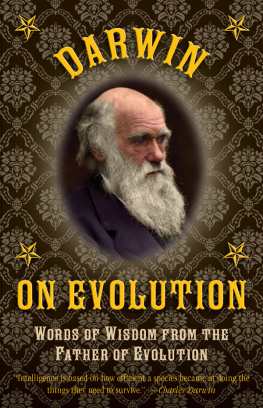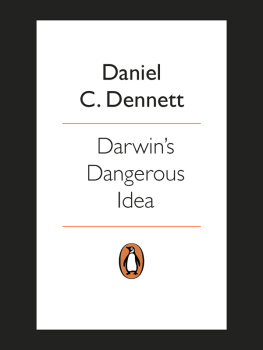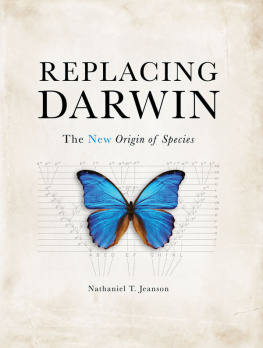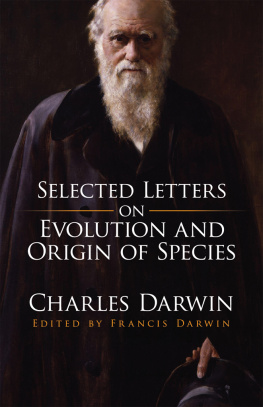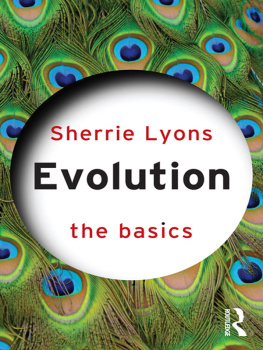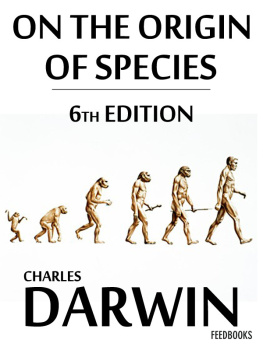Publishing information
This first edition published January 2009 by
Rough Guides Ltd., 80 Strand, London, WC2R 0RL
www.roughguides.com
Part of the Penguin Group:
Penguin Books Ltd. 80 Strand, London, WC2R 0RL
The publishers and authors have done their best to ensure the accuracy and currency of all information in The Rough Guide to Evolution; however, they can accept no responsibility for any loss or inconvenience sustained by any reader as a result of its information or advice.
No part of this guide may be reproduced in any form without permission from the publisher except for the quotation of brief passages in reviews.
Mark Pallen, 2009, 2011
ISBN 13: 978-1-85828-946-5
This Digital Edition published 2011. ISBN: 9781409358558
E-Book format prepared by DK Digital, London and DK Digital Media, Delhi.
Part 1 Ideas and Evidence
Part 2 The Greatest Story Ever Told
Introduction
A hundred and fifty years after the publication of The Origin of Species, Charles Darwin and his theory of evolution permeate our society. From cult TV shows like The Simpsons or Heroes to highbrow novels, such as Ian McEwans Saturday, from Guinness adverts to the British 10 note, Darwin and evolution are everywhere.
Darwins written work, perhaps uniquely among great scientists, is still widely read and remains accessible to the everyday reader. His heavy-browed avuncular face, complete with bushy beard, is instantly recognizable no other British scientist has achieved such iconic status. Although Darwin now stands as the undisputed founder of modern biology, his influence is also felt in disciplines as diverse as computer science and cosmology, economics and earth science, philosophy and engineering. To quote Ernst Mayr: Almost every component in modern mans belief system is somehow affected by Darwinian principles.
And yet, two centuries after his birth, most people still only have a hazy and distorted view of how evolution works. And for many, particularly in America, Darwin is more villain than hero. According to a poll in May 2007, nearly half of all Americans, and two-thirds of Republicans, do not believe in the theory of evolution. Creationism the belief that species were created in more or less their modern form by a supernatural being still dominates the agenda in school boardrooms across the US, despite repeated legal rulings banning it from American classrooms.
Why evolution matters
In an age in which astrology is more popular than astronomy, never has there been a more urgent need to defend science and rationalism. The evolutionary biologist Theodosius Dobzhansky once wrote: Nothing in biology makes sense except in the light of evolution. In the era of the human genome, his words are more cogent than ever: the human genome sequence would be impossible to interpret without comparisons to similar sequences from organisms as diverse as yeast, worms, fruit flies and rodents. A genome biologist who does not accept evolution is as unthinkable as an airline pilot who believes the world is flat!
Evolution helps us to know our enemy, to understand and fight against changes in the biological world that threaten human health, wealth, happiness and even our very survival: from the emergence of pesticide-resistant head lice to the menace of multi-drug resistant tuberculosis and hospital superbugs. Harnessing the creative power of evolution in the laboratory allows us to find new treatments for cancer or evolve new microbes able to clear up our own pollution.
In revealing and explaining the fascinating richness of life and its history, evolution also provides the ultimate account of creation, the greatest story ever told. An understanding of the dazzling diversity of life on Earth, and how life has shaped the very air we breathe and the climate we inherit, is central to our custodianship of the world. Evolution teaches that we are not separate from nature but an integral part of it, and an analysis of the evolutionary record brings us face to face with the terrifying reality of global climate change and mass extinction.
But evolutions most inspiring message comes from the realization that our species evolved in Africa no more than ten thousand generations ago. Just one small band of humans left the mother continent a mere two thousand generations ago to people the rest of the world: a breath-taking fact that reveals how all men are brothers and unites the sons of former slaves and the sons of former slave owners as the scatterlings of Africa.
How this guide works
The Rough Guide to Evolution aims to present the educated lay reader with a readable and trustworthy introduction to evolution, while also providing a source of inspiration and information for the hardened Darwin fanatic. From this one wide-ranging volume, the reader will not only learn what evolution is and who Darwin was, but will also be exposed to the full impact of evolutionary ideas on modern thought and popular culture. The first part of the content, Ideas and Evidence, introduces the key concepts of evolution and outlines Darwins life and works, documenting the evidence for evolution and providing a historical overview of contemporary evolutionary biology. The next section, The Greatest Story Ever Told, describes the rich history of life on Earth and of the evolution of our own human lineage. The third part, Impact, provides a unique survey of the influence of evolutionary thinking on science, culture and religion, and includes an account of creationist opposition to Darwins big idea. Finally, Resources provides the reader with a wealth of opportunities to follow up on the exciting facts and ideas surveyed in this guide.
Mark Pallen
Malvern, England, 2008
Acknowledgements
For inspiration, advice and encouragement in starting out on writing this guide, I thank Carl Zimmer, Bob Henson and Robert Shepard. I am extremely grateful to all my colleagues at the University of Birmingham who read and commented on early drafts: Tony Beech (Psychology), Ian Fairchild (Geography), Nick Loman (Medical School), David Parker (Theology), Tim Reston (Earth Sciences), Peter Robinson (Theology), Paul Smith (Earth Sciences), Dov Stekel (Biosciences) and Susannah Thorpe (Biosciences). I count myself lucky to work in such a constructive and collaborative academic environment! I should also like to express gratitude to friends and fellow academics from outside my university who have read and commented on parts of the manuscript: Emma D, Lauri Lebo, Danny Levin, Ken Miller, Berni Munt, Ronald Numbers, Fred Spoor and John Van Wyhe. I owe a debt of gratitude to the tremendous efforts of the online community of pro-evolution/anti-creationism enthusiasts, whose work I have consulted in creating this guide. In particular, I thank all those who have contributed to the talk.origins archive, especially Doug Theobald for his marshalling of the evidence for macroevolution. I thank Nick Matzke for his enthusiastic eyewitness account of the Dover trial. I am grateful to my colleagues from the university of the train for their support and patience: David Blackbourn, John Bryson, Julia and Martin Ellis, Steve Kukureka, Steve Minchin, Edward Peck, Martin Russell and Mike Ward. The opinions expressed herein are my own (as are any errors) and the content does not necessarily reflect the views of any of those who have commented on it.
I am extremely grateful to all my collaborators at Rough Guides: to Andrew Lockett for championing the initial proposal, to Ruth Tidball for helpful feedback on my initial efforts, to Ed Wright for the great diagrams, Nikhil Agarwal for typesetting and, most of all, to Joe Staines for all his hard work in editing my wordy prose and for his patience in tolerating a sometimes irascible and pedantic author. I thank my research group (Lewis, Lori, Nick, Rasha, Rob and Sophie) for putting up with a supervisor preoccupied with book writing and I hope my children (Emma, Charlie, Tasha and Tom) will forgive me for so many dull weekends sacrificed to the writing of this guide.

